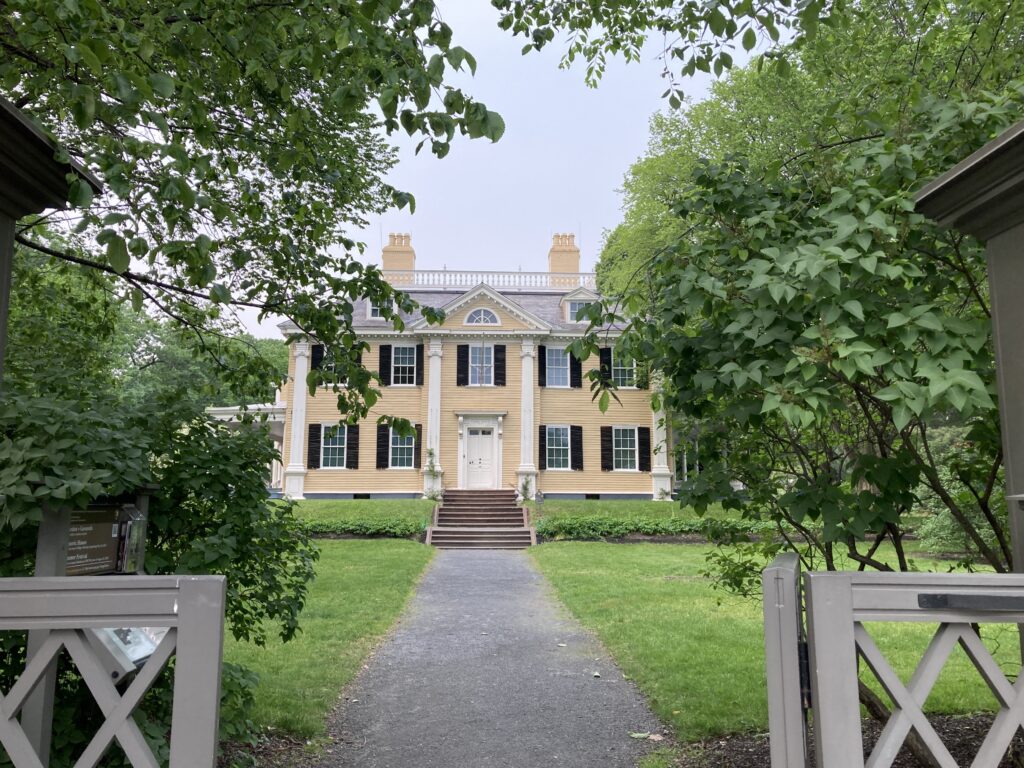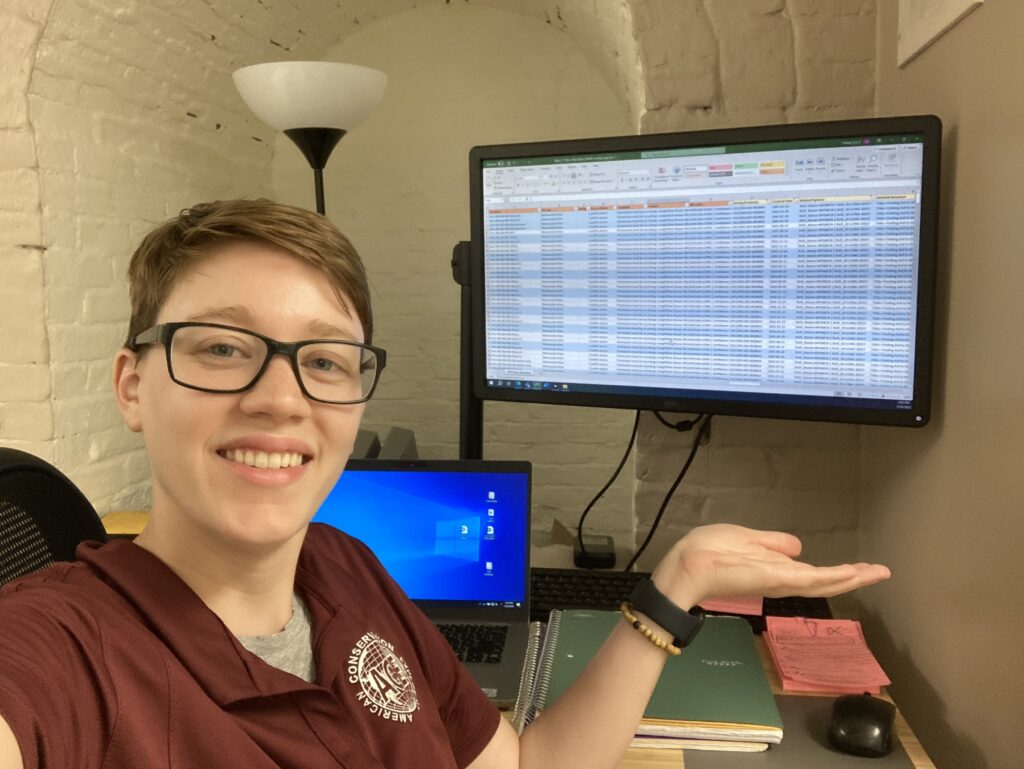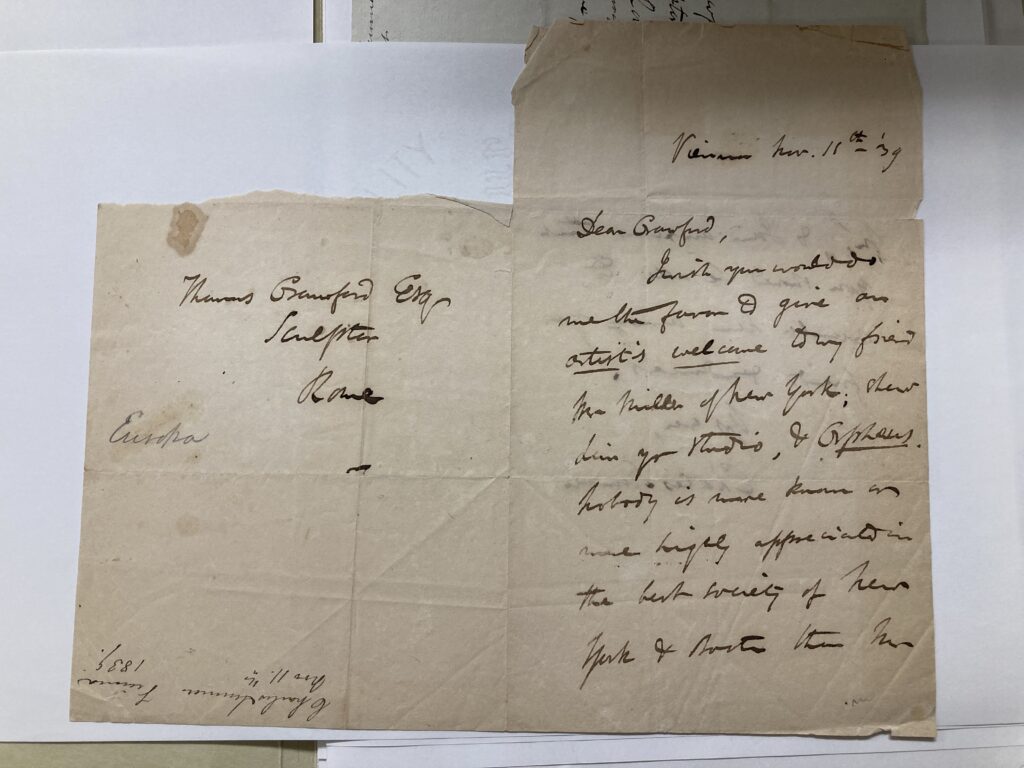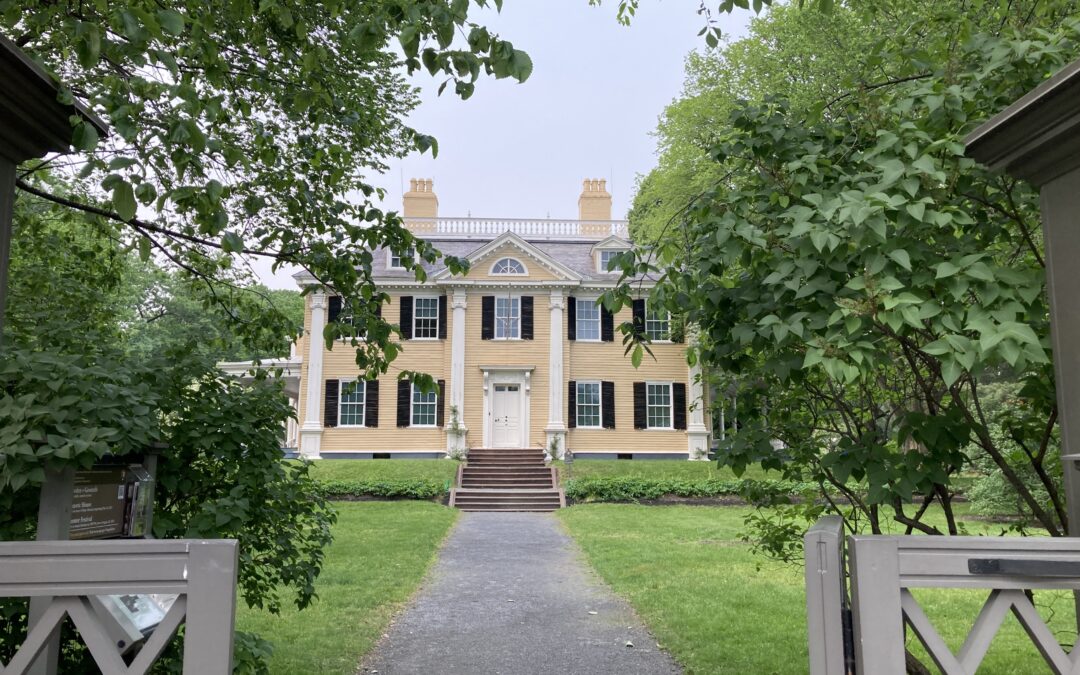Stories from the Digital Archives
Written By: Erin Wiebe
As the ACE CRDIP Digital Archives Member at the Longfellow House-Washington’s Headquarters National Historic Site in Cambridge, Massachusetts, I encounter a lot of history simply walking to my workspace every morning. Across the front lawn that saw George Washington’s arrival as general of the new Continental Army of the American Revolution, through the restored historic garden, into the house and past the study of famed 19th century poet Henry Wadsworth Longfellow, and to my desk in the archives reading room. Here, I’m surrounded by the letters, journals, photographs, art, and other records from the extended Longfellow family who were connected to this house on Brattle Street.

The Longfellow House-Washington’s Headquarters National Historic Site, which was home to Henry Wadsworth Longfellow and his family.
My primary work is digitization: helping make the archives available online. Through digitization, public history sites can make their collections more accessible to users, preserve fragile objects, and pool their resources with other sites. One way we do this at Longfellow is through NPGallery, the National Park Service’s public online database of images and historical materials.
Currently, my project is writing NPGallery metadata for scans of letters in the “Miscellaneous Famous People” collection, an amusing but accurate name for a group of correspondence written from the 1760s to 1970s by a wide range of notables. These include inventors like Thomas Edison, suffragists like Julia Ward Howe, and even presidents like George Washington and Teddy Roosevelt. Harry Dana, a grandson of Henry Longfellow, gathered this assortment during his stewardship of the house’s archives in the early 1900s.
Almost a hundred years after Harry Dana arranged them, the letters are now finding an expanded audience through NPGallery. I use a spreadsheet with standardized fields to type information for each scanned letter, like date and creator, how the letter is organized in its collection, and a description of its content (ideally a transcription if available—many thanks to past volunteers and employees who transcribed difficult handwriting!). Finally, I attach subject keywords to help users find what they’re looking for. Sometimes letters have unclear authors, recipients, or dates; these require extra research and problem-solving.

Metadata description work in progress.
A standout figure in my work with Miscellaneous Famous People so far? Nineteenth-century politician and advocate for racial equality Charles Sumner. Sumner, most remembered for surviving an attack on the Senate floor after giving a fiery anti-slavery speech, served as the United States Senator from Massachusetts from 1851 to 1874.
Sumner also happened to be close friends with Henry Wadsworth Longfellow and his wife Fanny (Appleton) Longfellow, spending many dinners discussing abolition, art, and social life with the literary power couple at their home on Brattle Street. Sumner’s letters are a window into their personal lives. In one letter from 1843, Sumner congratulates Fanny on her marriage to Henry: “May you be happy! May my dear Henry, happy in your love, make you forever happy in his! …In your friendship I shall always trust.”
Dozens of Charles Sumner letters filed in Miscellaneous Famous People reveal another fascinating story—sent to artist Thomas Crawford, they detail the journey of a sculpture from Rome all the way to Boston! Thomas Crawford is best known today as the sculptor of the Statue of Freedom on top of the US Capitol dome in Washington, DC. In 1841, Sumner, a fan of Crawford, wrote to him in Rome with a plan to raise money for a marble version of the artist’s Orpheus and Cerberus for the Boston Athenaeum. By early 1844, the sculpture had been purchased and the Orpheus had made the ocean crossing from Italy to the United States, but as Sumner wrote to Crawford, it had been damaged in transit. Despite this setback, Sumner assured the artist it had been “most successfully restored.” Several months later, the Orpheus was finally displayed in Boston to glowing reviews. Sumner even wrote to Crawford that “Longfellow and his wife…admired it very much.”

A letter from Charles Sumner to Thomas Crawford in Rome, discussing the sculpture Orpheus. Courtesy of National Park Service, Longfellow House-Washington’s Headquarters National Historic Site; Archives Number 1002/9.3-157#003.
Digitizing these letters makes them more widely accessible and encourages new connections between the past and the present. Today the Orpheus has its home at the Museum of Fine Arts, Boston, and letters by Charles Sumner are scattered amongst many institutions. But the Charles Sumner letters residing in the Longfellow House’s archives will soon be easily discoverable on NPGallery, reaching users from any location. I feel lucky to be part of the efforts to give these letters new life, and I look forward to discovering more stories in the digital archives!

